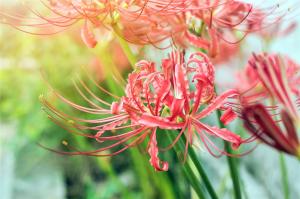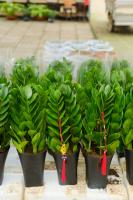Why Is My Weed Plant Leaves Turning Yellow?
Yellowing of leaves is a common problem that many weed growers encounter, especially during the vegetative stage. Leaves turning yellow can be a sign of several issues, including nutrient deficiencies, over or under watering, pests or diseases, light stress, and more. In this article, we will explore some of the reasons why your weed plant leaves may be turning yellow and how you can fix the issue to ensure healthy growth and higher crop yields.
Nutrient Deficiencies
One of the most common reasons why your weed plant leaves may be turning yellow is due to nutrient deficiencies. Marijuana plants require a specific balance of nutrients, including nitrogen, phosphorus, potassium, calcium, magnesium, and other micronutrients, to thrive. If any of these essential nutrients are missing or not absorbed adequately, the plants will show symptoms of yellowing leaves.
To fix a nutrient deficiency issue, you need to identify which nutrient the plant is lacking and adjust your feeding schedule accordingly. For example, if your plants are not getting enough nitrogen, you may need to increase the amount of nitrogen in your fertilizer or switch to a different brand that contains more of this nutrient. Conversely, if your plants are receiving too much of a particular nutrient, you may need to flush the soil with plain water to remove the excess.
Watering Issues
Another common cause of yellowing leaves is over or under watering. Marijuana plants require a balanced amount of water to grow correctly, and too much or too little can affect the plant's health. Overwatering can lead to root rot and other fungal diseases, while under watering can cause the leaves to wilt and eventually turn yellow.
To fix watering issues, you need to ensure that your plants receive the right amount of water regularly. It's essential to water your plants thoroughly but not too frequently to prevent overwatering. You can check the soil for moisture levels by sticking your finger into the soil about an inch. If it feels wet, do not water your plants, but if it feels dry, that's a sign it's time to water.
Pests and Diseases
Yellowing leaves can also be a sign of various pests or diseases, such as spider mites, aphids or fungal diseases. These issues can affect the plant's ability to absorb nutrients, which may cause the leaves to turn yellow. If left untreated, pest infestations or fungal diseases can spread quickly and cause substantial damage to your crop.
To fix pests or diseases issues, you need to identify the problem and take appropriate measures to eliminate it. For example, if your plants have spider mites, you can use neem oil or other natural insecticides to kill them. If your plants are affected by a fungal disease, treating them with a fungicide can help stop the spread of the disease.
Light Stress
Marijuana plants require a specific light spectrum for healthy growth during the vegetative stage. If they don't receive enough or too much light, you may notice that the leaves start turning yellow. Overexposure to light can also cause burn spots, which can make the problem more severe.
To fix light stress issues, make sure your plants receive the appropriate amount of light based on their stage of growth. During the vegetative stage, your plants should receive around 18 hours of light per day, while during the flowering stage, they should receive around 12 hours of light per day.
Conclusion
Yellowing of leaves is a common problem that many weed growers face. However, with proper care and attention, you can identify the cause and fix the issue to ensure healthy growth and increase crop yield. Remember to identify and treat the issue as soon as possible to prevent further damage to your plants. Happy growing!

 how many times do yo...
how many times do yo... how many planted tre...
how many planted tre... how many pine trees ...
how many pine trees ... how many pecan trees...
how many pecan trees... how many plants comp...
how many plants comp... how many plants can ...
how many plants can ... how many plants and ...
how many plants and ... how many pepper plan...
how many pepper plan...





























